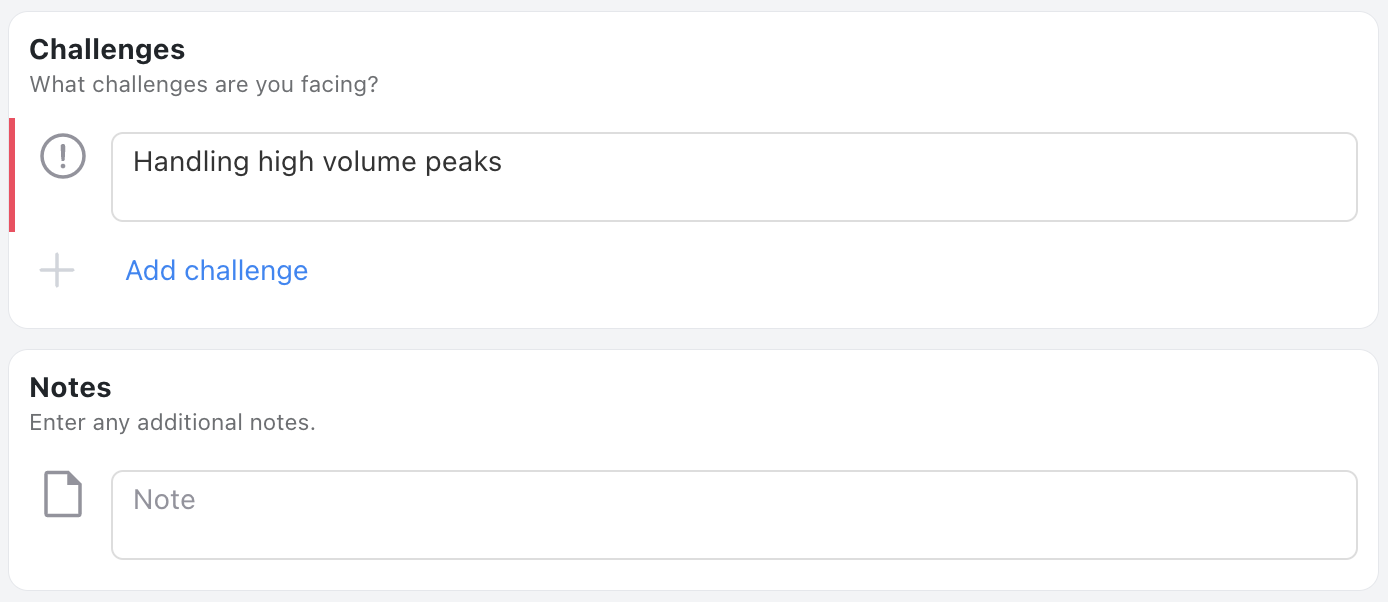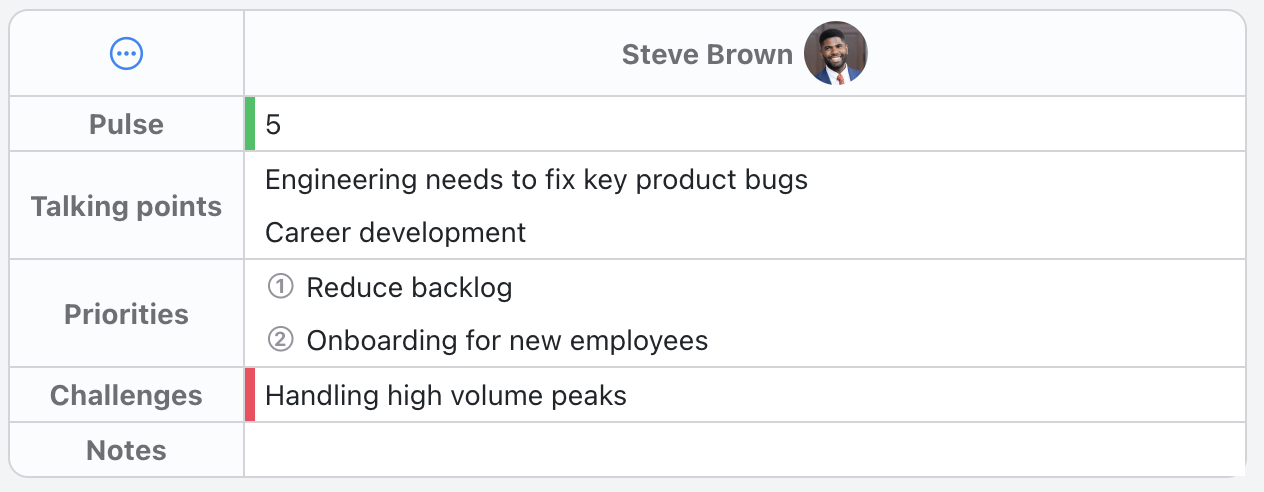One-on-one Meeting Template
Streamline your 1:1 meetings with this proven template. Track talking points, priorities, challenges, and action items in one organized format. Build stronger manager-employee relationships through structured, meaningful conversations.
One on One Meetings
A one-on-one meeting agenda is a roadmap for a focused and productive meeting between two individuals, typically a manager and a direct report, but it can also be used for peer-to-peer meetings. The purpose is to ensure both parties get the most out of the limited meeting time. Here's what a typical one-on-one meeting agenda covers:
I. Introduction & Icebreaker
Briefly acknowledge each other and set a positive tone.
An optional icebreaker question can help ease into the conversation.
II. Employee Check-in
Employee Led: The employee has a chance to discuss their workload, challenges, and areas they need support in.
Open Discussion: This is a two-way conversation where both can discuss workload, wellbeing, and work environment.
III. Project & Goal Updates
Progress Updates: Discuss the progress on ongoing projects and goals set in previous meetings.
Roadblocks & Solutions: Identify any roadblocks hindering progress and brainstorm solutions together.
Goal Setting: If needed, collaboratively set new goals or revise existing ones based on current priorities.
IV. Development & Feedback
Employee Development: Discuss opportunities for the employee's professional growth, like training, skill development, or mentorship.
Manager Feedback: The manager provides constructive feedback on the employee's performance, focusing on both strengths and areas for improvement.
Employee Feedback: If comfortable, the employee can offer feedback on the manager's leadership style or areas for improvement.
V. Action Items & Next Steps
Summarize key takeaways, decisions made, and action items with clear ownership for each.
Agree on next steps and deadlines.
VI. Open Discussion & Wrap-Up
Open forum for any additional topics either party wants to raise.
Briefly summarize key points and end on a positive note.
Additional Tips
Collaborative Effort - The agenda should be created collaboratively, with input from both parties.
Shared Agenda - Distribute the agenda beforehand to allow for individual preparation and ensure everyone's on the same page.
Flexibility - While the agenda provides structure, leave room for open discussion and addressing unforeseen topics.
Action Items & Follow-Up - Clearly defined action items and a follow-up plan ensure accountability and maintain momentum between meetings.
By following this structure and tailoring it to your specific needs, you can ensure your one-on-one meetings are productive and contribute to a strong working relationship.
Status Update
The status update includes discussion topics for a one-on-one meeting.


Status Form
The status form shows the content from the status update.
